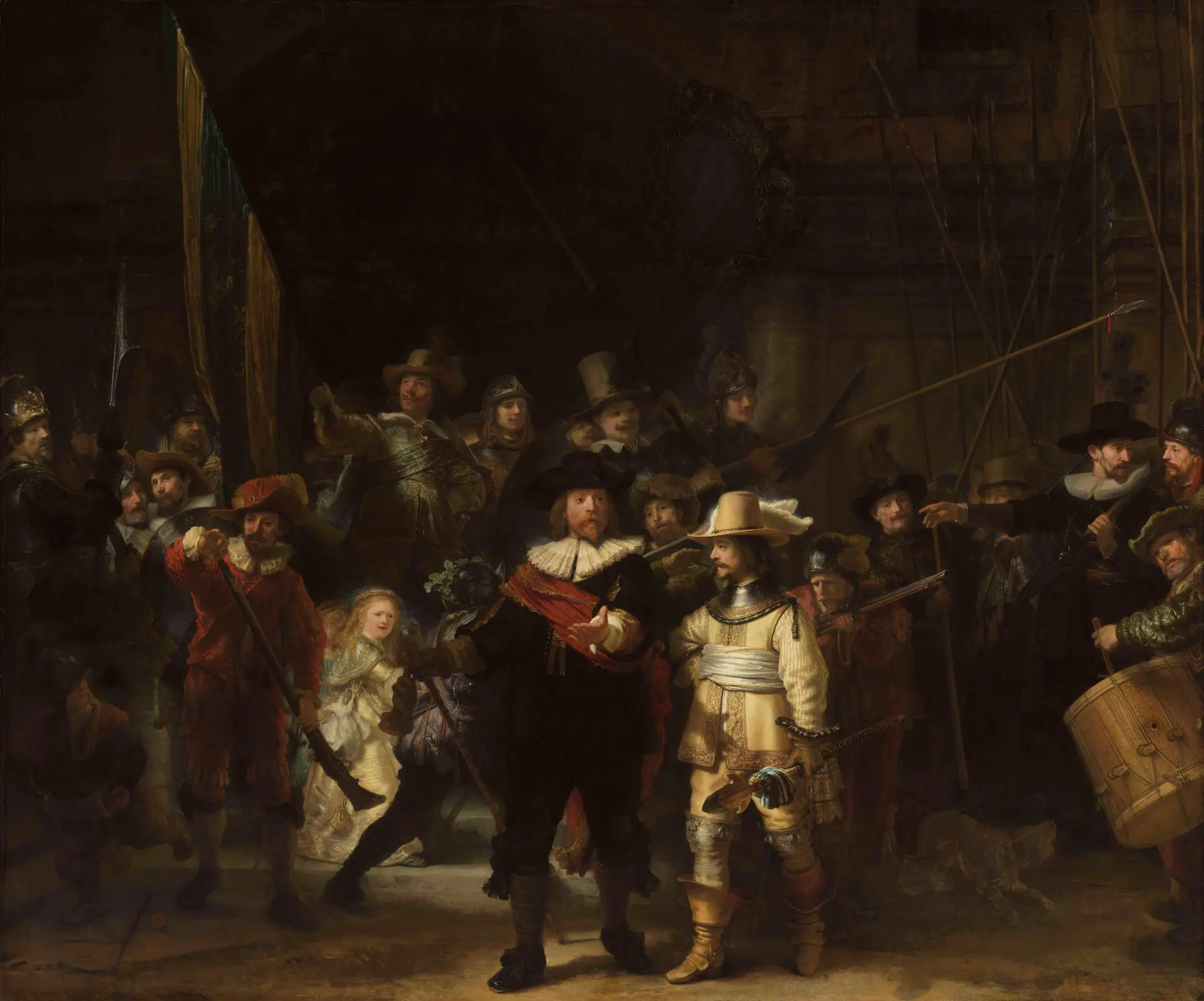Chemists from the State Museum and the University of Amsterdam (UvA) have determined for the first time how Rembrandt used special arsenic sulphide pigments to create his “gold” paint effect. Using advanced spectroscopic techniques, they mapped in intricate detail the presence of pararealgar (yellow) and semi-amorphous pararealgar (orange/red) pigments in his famous painting The Night Watch.
By confirming research into relevant historical sources, they concluded that Rembrandt deliberately combined these specific arsenic sulfide pigments with other pigments to create a golden sheen.
The discovery was recently published in a research article in a scientific journal. Science of Heritage Frederik Broers and Nuchki de Keyser, PhD students at the UvA Van ‘t Hoff Institute for Molecular Sciences and researchers at the Rijksmuseum, concluded that Rembrandt used a rather unusual combination of pigments to depict the gold thread on the doublets’ sleeves and the embroidered jacket worn by Lieutenant Willem van Ruytenburch. To the right of the two central figures in the front of the picture of the rifle company, Captain Frans Bunninck accompanies Kock.
Unusual pigments
The discovery of arsenic sulfide pigments occurred within the framework of a large-scale research project. Operation Night WatchA full X-ray fluorescence (MA-XRF) scan of the painting, which began in 2019 and continues to produce impressive results, revealed the presence of arsenic and sulfur in parts of Van Ruytenburch’s clothing. This led researchers to hypothesize the presence of the well-known arsenic sulfide pigments orpiment (yellow) and realgar (red). Close examination of two small paint samples taken from the painting suggested otherwise. The high-tech analysis, combining light microscopy with microcombination spectroscopy, electron microscopy and X-ray powder diffraction, revealed the presence of the more unusual arsenic sulfide compounds pararealgar (yellow) and semi-amorphous pararealgar (orange-red).
Section of SK-C-5_017 paint sample under a light microscope. Showing distinct crystals of yellow, orange and red pigments, whose exact composition was determined using electron microscopy, Raman spectroscopy and X-ray powder diffraction. Image courtesy of the Rijksmuseum.
Intentional use
The presence of pararealgar in historical paintings is often attributed to the aging of the realgar. However, since the pararealgar was evenly distributed with the semi-amorphous pararealgar and the paint appeared unchanged, researchers have proposed another explanation. They argue that Rembrandt deliberately chose these pigments in order to imitate the gold details in Van Ruytenburch’s clothing. Heating the yellow pararealgar pigment results in the formation of reddish semi-amorphous pararealgar. This was then combined with lead-tin yellow and red (red mercury sulfide) pigments to create a golden sheen.
This chemical explanation is supported by a comprehensive review of historical sources reporting the use of arsenic sulfide pigments. It appears that a wider range of arsenic pigments were available in seventeenth-century Amsterdam than previously thought. They probably came from the famous trade routes from Germany/Austria and Venice to Amsterdam. This is also supported by reports that Rembrandt’s contemporary in Amsterdam, Willem Kalf (1619–1693), used a very similar pigment mixture. Thus, researchers have concluded that Rembrandt deliberately used paraaralgar and semi-amorphous paraaralgar together with tin yellow and vermilion to create a special orange “gold” paint.
Source: Port Altele
